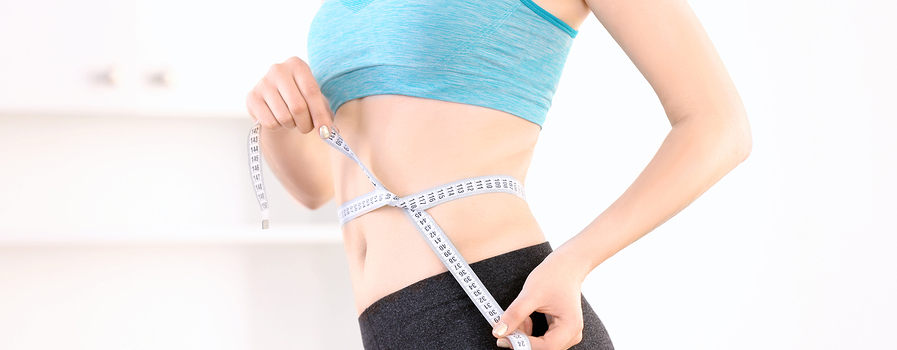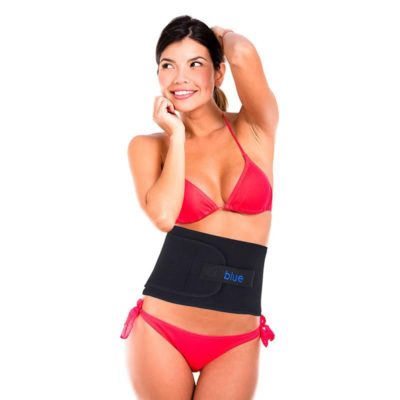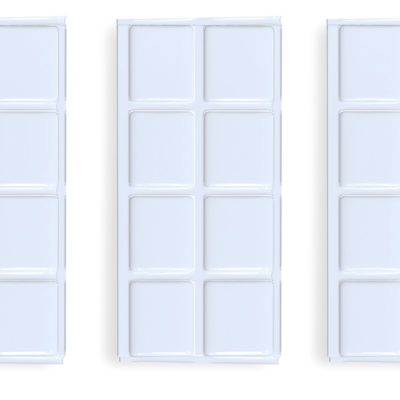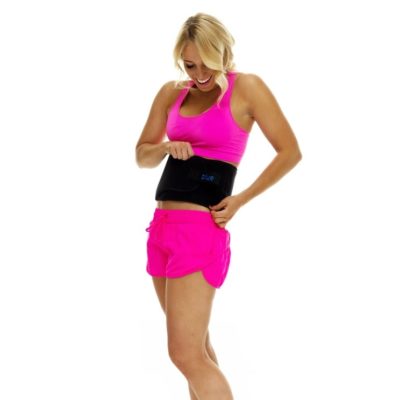Michael Sapko MD, PhD
Fat freezing is a noninvasive, fat removal technique that destroys fat cells by subjecting them to cold temperatures. While the term is mostly accurate, fat freezing does not actually “freeze” fat cells. Instead, fat freezing or cryolipolysis cools fat cells to a point that they “self-destruct,” in a process called apoptosis. The result of fat freezing is visibly less fat without injections or surgery.
How does fat freezing work?
Skin contains many different types of cells: hair cells, skin cells, nerve cells, and fat cells, etc. When a cell is subjected to cold temperatures, it undergoes a process called apoptosis. Apoptosis is a form of cell suicide, essentially a self-destruct mechanism for cells. It is the natural way the body eliminates old or damaged cells.
The reason that fat freezing works as a fat reduction technique is that fat cells are much more sensitive to the effects of cold then other cells in the skin. So when you use a fat freezing machine or fat freezing belt to moderately cool the skin, fat cells are stimulated to self-destruct while other cells in the skin are not.1 Fat cells die, but other cells are left intact. Cells called macrophages then clear the fat cell debris from the body within about two weeks after treatment.
Like liposuction and fat removal surgery, fat freezing actually removes fat cells from the body. This is an important distinction because dieting and exercise simply shrink existing fat cells, but do not fully remove them from the body. Therefore, the terms “fat freezing” or “freezing fat off” are mostly accurate; cryolipolysis actually removes fat cells.

Get started using blue and join the thousands who’ve already seen incredible results to their bodies!!
Does fat freezing work?
Fat freezing actually works remarkably well. This peculiar difference between fat cells and other cells allows healthcare professionals to selectively freeze fat away while leaving other cells undamaged. Clinical studies have shown that subcutaneous fat (fat just under the skin) is reduced by up to 25% after a single treatment.2,3 Fat freezing leads to noticeable fat reduction in 86% of treated patients.4 Moreover, fat freezing treatment ranks above other non-invasive fat reduction techniques in terms of patient satisfaction.4,5
Is fat freezing safe?
Fat freezing has inherent safety advantages over fat removal surgery or liposuction. Firstly, fat freezing treatment is noninvasive so there are no breaks in the skin. Thus, infection or bleeding risks are nonexistent. The main concern patients express when considering fat freezing treatment is whether the cooling system will damage the skin, i.e., cause frostbite. Clinical studies have shown that this is a theoretical risk rather than a practical risk.2 Even this theoretical risk could be minimized by using higher-than-freezing treatment temperatures. For example, patients could use fat freezing belts to the lower skin to the temperature of ice rather than fat freezing machines that may use colder temperatures.
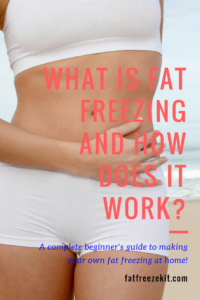
Some fat freezing techniques can cause skin redness, bruising, and numbness that usually resolves within two weeks of treatment.2 In less than 0.1% of procedures (1 in 1,000) patients experience pain in the treatment area two weeks after treatment, which resolves on its own.2 There have been no reported cases of scarring, alteration, or disfigurement.2
Can I do fat freezing at home?
The two main ways to perform fat freezing are fat freezing machines or fat freezing belts (e.g. Blue Fat Freeze System). Fat freezing machines are operated by a medical professional in an office setting. Fat freezing belts, on the other hand, are specifically designed to perform fat freezing at home. Fat freezing can be done at home but there are some important caveats. In order to reach the target temperature, the fat freezing system must be prepared in a freezer prior to use. This may take up to 24 hours before fat freezing treatment. Importantly, the treated fat cells must be lowered to the target temperature for apoptosis to occur, so treatments may need to be repeated. In addition, patients should massage the treatment area immediately after treatment. If the treatment area is difficult to reach (e.g. flank fat, back fat), the patient should have someone help them perform this step. Ideally, anyone considering using a fat freezing system including a fat freezing belt should consult with a physician.
Summary
Fat freezing or cryolipolysis is a safe and effective method to remove unwanted fat. Fat freezing does not actually freeze fat, but lowers the temperature of fat cells to a point where they commit apoptosis or cell suicide. Once fat cells die, other cells remove them from the body. This process leaves patients with visibly less fat. Clinical studies have shown that fat freezing is safe, effective, and is associated with high patient satisfaction rates. Fat freezing is typically performed using fat freezing machines or fat freezing belts. Fat freezing belts offer the advantage of fat freezing at home, but patients must make sure to carefully follow all instructions.
Wondering who we are and why we started blue??
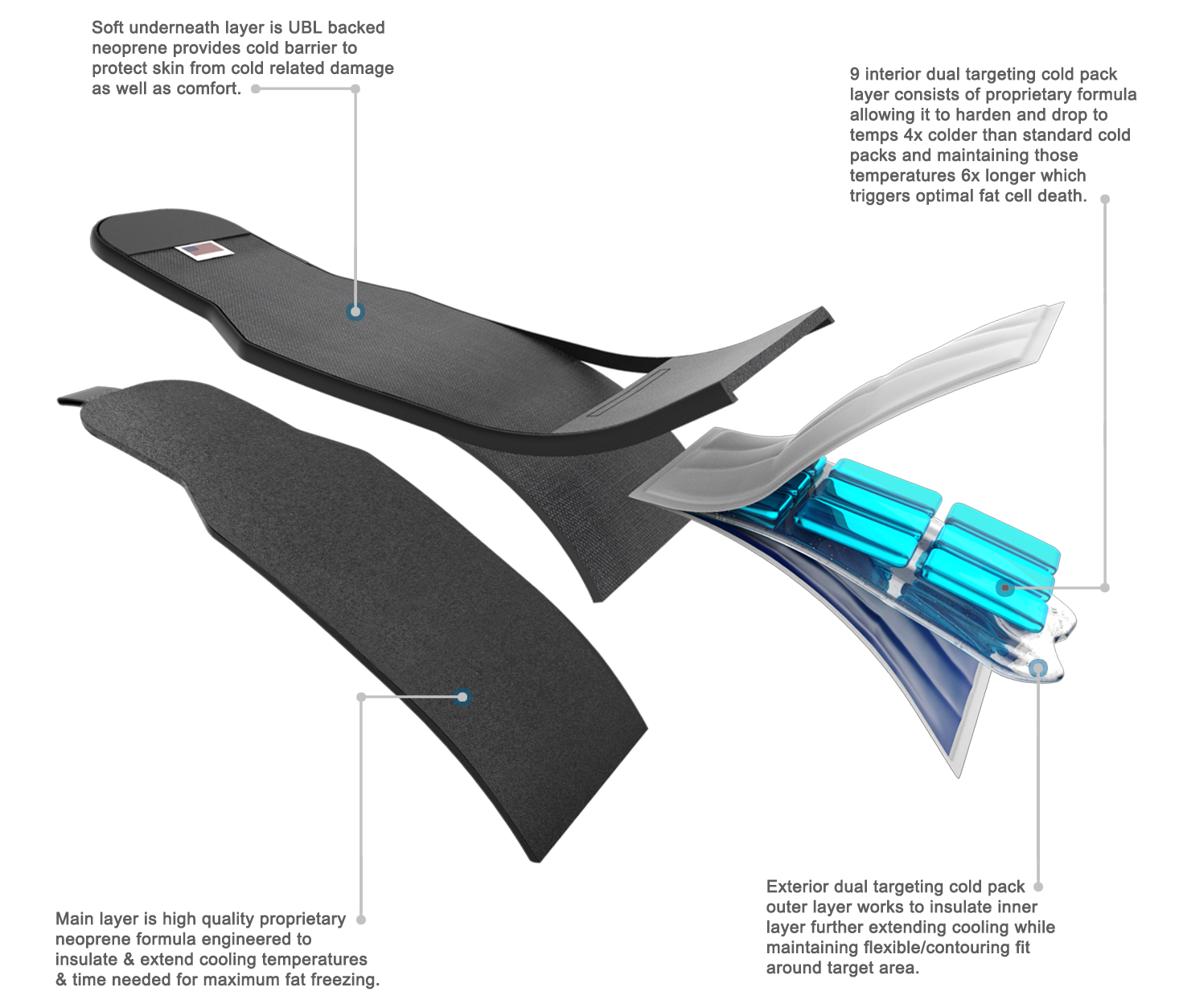
References
1. Avram MM, Harry RS. Cryolipolysis for subcutaneous fat layer reduction. Lasers Surg Med. 2009;41(10):703-708. doi:10.1002/lsm.20864
2. Krueger N, Mai SV, Luebberding S, Sadick NS. Cryolipolysis for noninvasive body contouring: clinical efficacy and patient satisfaction. Clin Cosmet Investig Dermatol. 2014;7:201-205. doi:10.2147/ccid.s44371
3. Coleman SR, Sachdeva K, Egbert BM, Preciado J, Allison J. Clinical efficacy of noninvasive cryolipolysis and its effects on peripheral nerves. Aesthetic Plast Surg. 2009;33(4):482-488. doi:10.1007/s00266-008-9286-8
4. Dierickx CC, Mazer JM, Sand M, Koenig S, Arigon V. Safety, tolerance, and patient satisfaction with noninvasive cryolipolysis. Dermatol Surg. 2013;39(8):1209-1216. doi:10.1111/dsu.12238
5. Alizadeh Z, Halabchi F, Mazaheri R, Abolhasani M, Tabesh M. Review of the Mechanisms and Effects of Noninvasive Body Contouring Devices on Cellulite and Subcutaneous Fat. International Journal of Endocrinology and Metabolism. 2016;14(4):e36727. doi:10.5812/ijem.36727
Does fat freezing work?
Fat freezing actually works remarkably well. This peculiar difference between fat cells and other cells allows healthcare professionals to selectively freeze fat away while leaving other cells undamaged. Clinical studies have shown that subcutaneous fat (fat just under the skin) is reduced by up to 25% after a single treatment.2,3 Fat freezing leads to noticeable fat reduction in 86% of treated patients.4 Moreover, fat freezing treatment ranks above other non-invasive fat reduction techniques in terms of patient satisfaction.4,5
Is fat freezing safe?
Fat freezing has inherent safety advantages over fat removal surgery or liposuction. Firstly, fat freezing treatment is noninvasive so there are no breaks in the skin. Thus, infection or bleeding risks are nonexistent. The main concern patients express when considering fat freezing treatment is whether the cooling system will damage the skin, i.e., cause frostbite. Clinical studies have shown that this is a theoretical risk rather than a practical risk.2 Even this theoretical risk could be minimized by using higher-than-freezing treatment temperatures. For example, patients could use fat freezing belts to the lower skin to the temperature of ice rather than fat freezing machines that may use colder temperatures.
Some fat freezing techniques can cause skin redness, bruising, and numbness that usually resolves within two weeks of treatment.2 In less than 0.1% of procedures (1 in 1,000) patients experience pain in the treatment area two weeks after treatment, which resolves on its own.2 There have been no reported cases of scarring, alteration, or disfigurement.2
Can I do fat freezing at home?
The two main ways to perform fat freezing are fat freezing machines or fat freezing belts (e.g. Blue Fat Freeze System). Fat freezing machines are operated by a medical professional in an office setting. Fat freezing belts, on the other hand, are specifically designed to perform fat freezing at home. Fat freezing can be done at home but there are some important caveats.
In order to reach the target temperature, the fat freezing system must be prepared in a freezer prior to use. This may take up to 24 hours before fat freezing treatment. Importantly, the treated fat cells must be lowered to the target temperature for apoptosis to occur, so treatments may need to be repeated. In addition, patients should massage the treatment area immediately after treatment. If the treatment area is difficult to reach (e.g. flank fat, back fat), the patient should have someone help them perform this step. Ideally, anyone considering using a fat freezing system including a fat freezing belt should consult with a physician.
Summary
Fat freezing or cryolipolysis is a safe and effective method to remove unwanted fat. Fat freezing does not actually freeze fat, but lowers the temperature of fat cells to a point where they commit apoptosis or cell suicide. Once fat cells die, other cells remove them from the body. This process leaves patients with visibly less fat. Clinical studies have shown that fat freezing is safe, effective, and is associated with high patient satisfaction rates. Fat freezing is typically performed using fat freezing machines or fat freezing belts. Fat freezing belts offer the advantage of fat freezing at home, but patients must make sure to carefully follow all instructions.
Wondering who we are and why we started blue??
References
1. Avram MM, Harry RS. Cryolipolysis for subcutaneous fat layer reduction. Lasers Surg Med. 2009;41(10):703-708. doi:10.1002/lsm.20864
2. Krueger N, Mai SV, Luebberding S, Sadick NS. Cryolipolysis for noninvasive body contouring: clinical efficacy and patient satisfaction. Clin Cosmet Investig Dermatol. 2014;7:201-205. doi:10.2147/ccid.s44371
3. Coleman SR, Sachdeva K, Egbert BM, Preciado J, Allison J. Clinical efficacy of noninvasive cryolipolysis and its effects on peripheral nerves. Aesthetic Plast Surg. 2009;33(4):482-488. doi:10.1007/s00266-008-9286-8
4. Dierickx CC, Mazer JM, Sand M, Koenig S, Arigon V. Safety, tolerance, and patient satisfaction with noninvasive cryolipolysis. Dermatol Surg. 2013;39(8):1209-1216. doi:10.1111/dsu.12238
5. Alizadeh Z, Halabchi F, Mazaheri R, Abolhasani M, Tabesh M. Review of the Mechanisms and Effects of Noninvasive Body Contouring Devices on Cellulite and Subcutaneous Fat. International Journal of Endocrinology and Metabolism. 2016;14(4):e36727. doi:10.5812/ijem.36727



